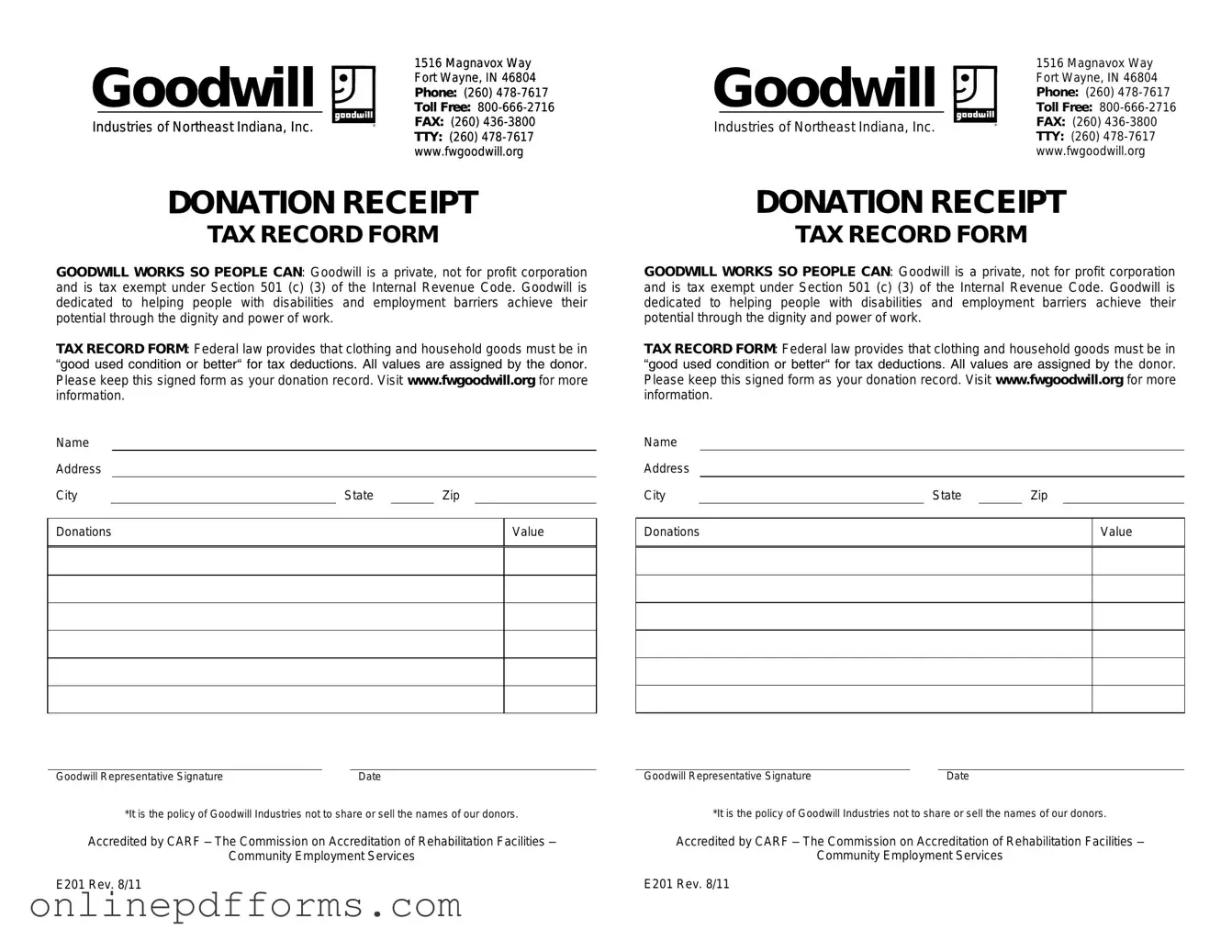The Goodwill donation receipt form is similar to a charitable contribution receipt. Both documents serve as proof that a donation has been made to a nonprofit organization. These receipts typically include the name of the donor, the date of the donation, and a description of the items donated. They are essential for individuals who want to claim tax deductions for their charitable contributions. Just like the Goodwill form, a charitable contribution receipt helps ensure that donors have the necessary documentation to support their tax filings.
Another document that shares similarities is the IRS Form 8283, which is used for noncash charitable contributions. This form is required when a donor claims a deduction for items valued over $500. Like the Goodwill receipt, Form 8283 must detail the donated items and their fair market value. Both documents help establish the legitimacy of the donation and provide necessary information for tax purposes, ensuring that donors comply with IRS regulations.
The donation acknowledgment letter from a nonprofit organization is also comparable. This letter is sent to donors to confirm their contributions, similar to how a Goodwill receipt functions. It typically includes the donor’s name, the date of the donation, and a statement indicating whether any goods or services were provided in exchange for the donation. Both documents serve as important records for donors, reinforcing their commitment to charitable giving and supporting their tax claims.
This overview of various charitable donation documents highlights their common purpose of providing proof for tax deductions while ensuring transparency in the donation process. Among these, the Auto Bill of Sale Forms exemplify the importance of clear records in financial transactions, analogous to how donation receipts serve to document contributions and maintain compliance with IRS criteria. The consistency in information provided across different documents emphasizes the necessity for accuracy and clarity to benefit both donors and organizations alike.
In addition, a donor’s tax return can be seen as a related document. While not a receipt itself, it includes the details of all charitable contributions made throughout the year, including those documented by forms like the Goodwill receipt. This ensures that donors can accurately report their charitable deductions to the IRS. Both the tax return and the Goodwill receipt work together to provide a complete picture of an individual’s charitable giving.
The in-kind donation form is another document that resembles the Goodwill donation receipt. This form is often used by organizations to record noncash donations, such as clothing, food, or services. Similar to the Goodwill receipt, it includes details about the items donated and their estimated value. Both documents are crucial for tracking donations and ensuring transparency in charitable activities.
Lastly, a sales receipt from a thrift store or consignment shop can also be compared to the Goodwill donation receipt. While a sales receipt confirms a purchase, it can indirectly relate to donations by showing the value of items that were sold after being donated. Both types of receipts reflect the cycle of charitable giving and the importance of documenting transactions for financial records, whether for donations or purchases.
